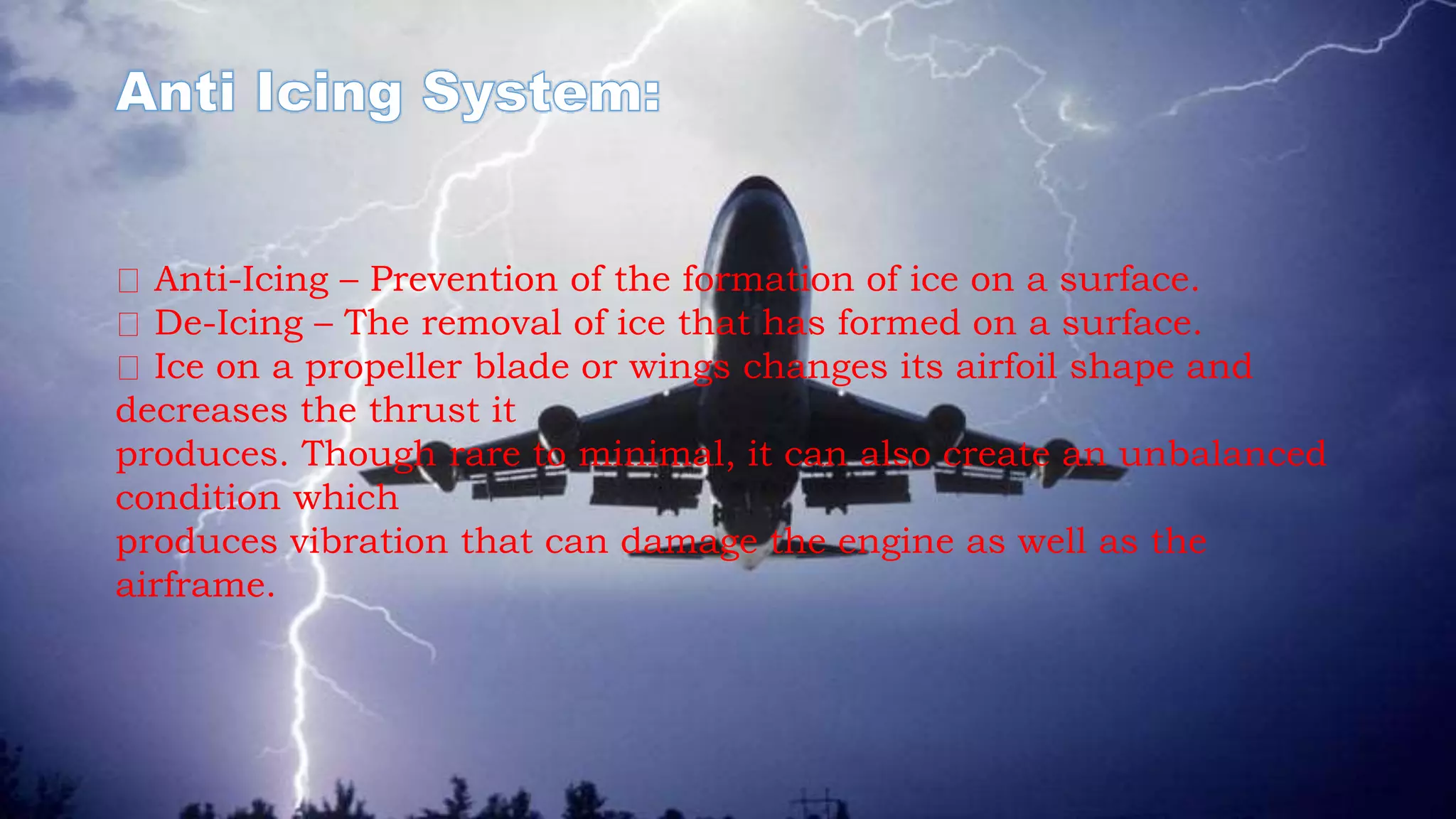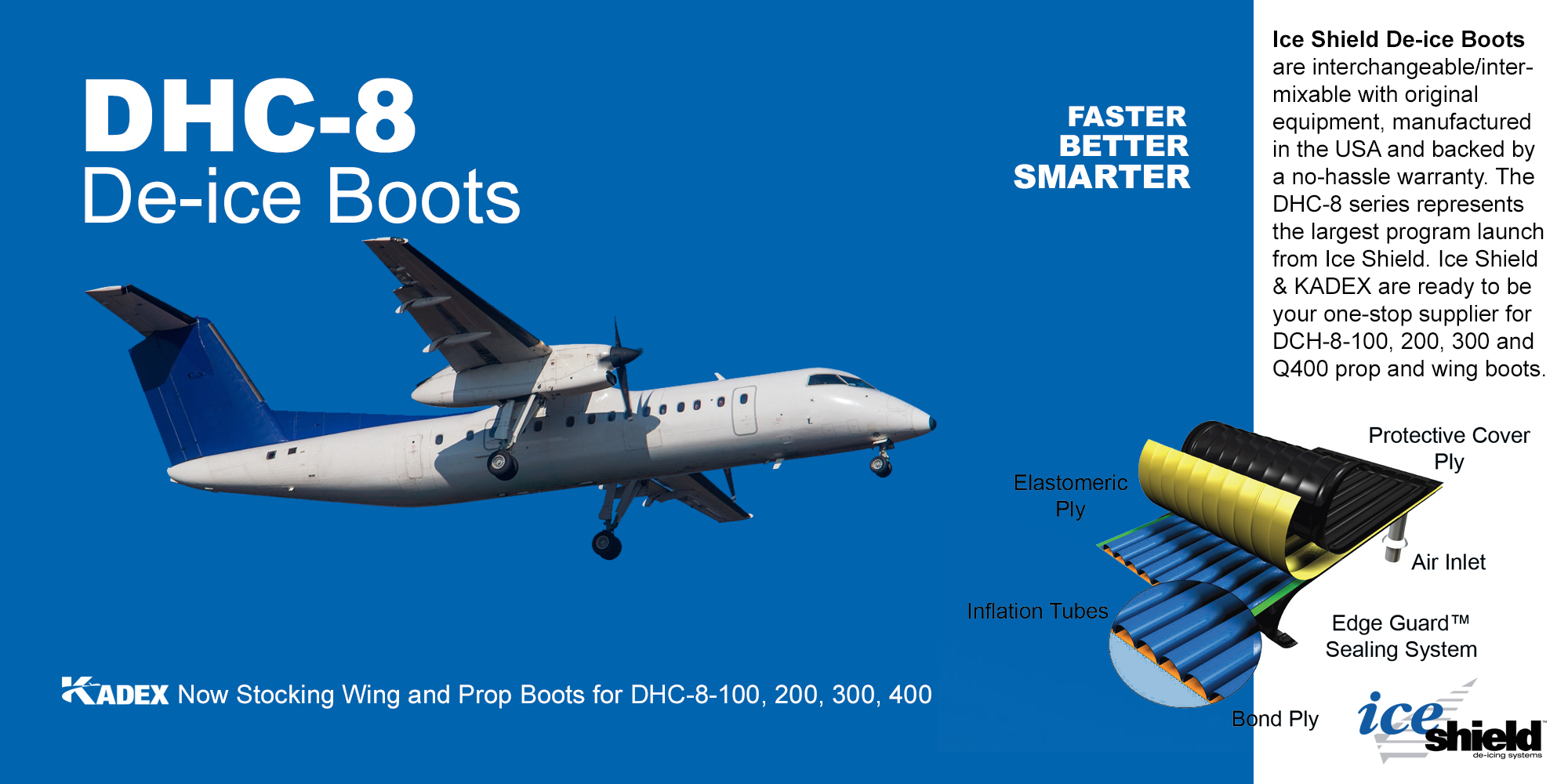Anti-icing Systems For Aircraft - The highest rated in-flight ice protection system (IPS) on the market, TKS® systems can be designed for both inadvertent (no risk) and known in-flight (FIKI) conditions. It is certified for installation on more than 100 different aircraft model variants and is available for integration into a wide range of general aviation aircraft and unmanned aerial vehicle models at the factory, or as a retrofit.
The TKS® system is designed to protect all major edges of an aircraft, including the wings, stabilizers and pylons, as well as the propeller and windshield.
Anti-icing Systems For Aircraft

"I know I'm going to get creamed, especially during the winter in Minnesota. TKS® was a factory installed option for this airplane and I wanted to have an ice protection system on the airplane that would allow me to land or climb safely safe in icy conditions so I don't have to worry about my plane going into ice and I find myself in a very dangerous situation. The TKS® system is important to me because I know I can go into the clouds and have a mechanism by which my aircraft can be kept clear of ice and therefore also have aerodynamic properties that work well.
B737− Cowl Anti Ice System Cowl Antice System.
TKS® protects your aircraft's surface from freezing by evenly distributing a freezing point depression solution throughout the airframe, preventing ice build-up.
The system is designed to be anti-freeze, but it is also able to defrost, as the TKS® fluid chemically breaks the bond between the ice and the frame, which allows the system to remove any accumulated ice and prevents any accumulation of subsequent ice.
1 Using TKS® fluid, the system lowers the freezing point of in-flight moisture to at least ambient temperature or down to -76°F (-60°C).
2 Dispersed by laser-perforated titanium panels, which are mounted on the edges of the aircraft, the TKS® fluid mixes with the supercooled water in the cloud and the aerodynamic forces move the mixture away without adhering to the airframe.
Anti Ice Coating For Aerospace Industry
3 While maintaining the original aerodynamic performance of the aircraft, the factory-fitted panels can be built to the original definition of the leading edge shape or fitted to a leading edge such as a hood.
4 Lightweight titanium panels can be mounted on the wings, wing bars, horizontal and vertical stabilizers and fixed landing gear. While a traditional slinger ring provides ice protection to the propeller and the windshield is protected by a spray bar.
5 This protects both the trailing edge and the trailing chord of the wing as fluid flows from the trailing edge under and over the entire airplane chord.

6 For inadvertent systems, a dosing pump is provided. FIKI certified systems have two dosing pumps for redundancy, which can be selected individually. Two on-demand windshield protection pumps, which can be manually selected by the pilot and operated individually or collectively based on operational selection, are also available for FIKI.
Aircraft Anti Icing & De Icing Sytems Project Report
TKS® Fluid has cleaning properties that do not damage the paint finish and removes debris from the panel holes. Unlike ground deicing fluids, which can sometimes corrode aircraft panels, TKS® fluid is non-corrosive. This story was done in partnership with Republic Airways. Watch the full series here. Ready to apply for a pilot job? Submit your application here.
The cream is one of the most dangerous threats in aviation. Here are the advantages and disadvantages of common ice freezing equipment.
Because ice boots use compressor bleed air, you never run out of freeze protection. Most aircraft equipped with de-icing boots have manual or automatic modes, which will cycle through different sections of the de-icing boots.
When you inflate the boot, you change the aerodynamic characteristic of the airfoil, which increases the settling speed. There is also the risk of ice forming behind the trunk, where it cannot be removed from the system. Finally, finally, there is the danger of holes in the boots. If this happens, they will not inflate properly and your ability to remove the ice will decrease.
Aircraft Propeller Deice System
A major advantage of winglets is their ability to protect the entire surface of the airfoil. When the TKS fluid is pumped from the tip fronts, it returns to the top and bottom of the surface, forming a layer of anti-icing protection.
You can only carry a limited amount of TKS juice and you will eventually run out. Even in freezing conditions, you need to consider what your plan of action will be in order not to get fluids out (most aircraft equipped with TKS have 1.5-2.5 hours of protection in normal conditions) .
Using flowing air to heat the tip surfaces can be very effective. While your engine is running, the exhaust air from the turbine section will be warm enough to prevent ice from forming.

If you turn on the heated fronts too late, there is a risk of flashback, which can freeze behind the protected surfaces. If you do not turn on the system in time, you can cause pieces of ice to break the engine cover and enter the engine. Another disadvantage, like ice boots, is their performance penalty.
The New Dhc 8 De Ice Boot
Surfaces such as aircraft windows are quickly provided with anti-icing and anti-icing protection, regardless of engine operation. Since they are electric, unless you have an electrical failure, you will always have protection against ice and freezing on the surface.
Electrically heated surfaces, such as alpha sheets on large aircraft, windshields and pitot tubes, can be damaged if the heating device is left on during ground operations. Another disadvantage is its inability to heat large areas, such as the wings and the surface of the tail.
Electro-Mechanical Discharge Ejection, or EMEDS, detects ice through a sensor. As the ice begins to build, the casings behind the tip skin begin to vibrate, causing the ice to break. Because it does not change the surface of the airfoil, the system does not increase the stall speed. Another advantage is its relatively low energy requirement for operation.
According to Cox and Company, the devices have to be integrated into the fuselage of the plane, so this technology will not see larger commercial jets for a while. They begin to develop in smaller aircraft such as the corporate jet Raytheon Premier 1. Another disadvantage is their application to all surfaces. Because pouring ice on the engine is a bad idea, warm driving surfaces should always be used on the hood entrance.
Ground Icing: De Icing Operations
Have you flown any of these systems? What is your favorite de-icing/anti-icing system? Tell us in the comments below.
Ready to start your career in aviation? Do you want to fly an E-170/175? Get started and apply to Republic Airways today.
Subscribe to the email and get real-world flight tips and information straight to your inbox every week. With winter almost in full swing north of the equator, it's only a matter of time before instrument-rated pilots have to make decisions about how to escape icing situations, both before takeoff and en route. The ice adds weight and acts as a lift spoiler on the wings and tail surface. Ice can also affect engine operation for all aircraft. Ice protection is broadly categorized as anti-icing or anti-icing, depending on the equipment installed and the aircraft's certification.

When it comes to protecting an aircraft from icing, there are few absolutes, just guidelines for when to expect icing. In visible humidity when the outside air temperature is below 37 degrees, pilots should expect to see the white stuff starting to hang. While deicing equipment is certainly useful for removing ice from aircraft or power plants, the best strategy is to leave the altitude or weather system that produces the ice as quickly as possible. High performance aircraft have the advantage here when it comes to evasive maneuvers.
Aircraft Deicing A Small Aircraft
Deicer Boots - Boots are rubber handles attached to the leading edges of the wings and horizontal stabilizer, powered by pneumatic air. The boots expand and contract cyclically when activated by the pilot to break the ice jam that is trying to break the elevator. The boots expand sequentially in such a way that not all parts of the airfoil melt at the same time. The trick is not to wait too long to activate them, because they won't be able to keep up with a rapid accumulation of ice.
Hot Leading Edges - Most transport class aircraft use leading edges heated internally by exhaust air drawn from their turbine engines and then ducted to the appropriate location. Airfoils heat up before the aircraft hits the ice. A disadvantage of the heating of the top air is the power it draws, which can limit the performance of the aircraft, as it grows.
TKS - This system covers the leading edges that produce the elevator with a fine wire mesh that includes holes that are almost impossible to see with the human eye. When a TKS-equipped aircraft approaches freezing conditions, the pilot activates the system, which then ejects an anti-icing fluid from the vents along the leading edges to prevent ice build-up.
Pitot Tube Heat - Ice adhering to pitot tubes exposed to the slipstream and water-laden atmosphere are susceptible to freezing as are airfoils. Pitot tubes, stall flaps, and outside air temperature indicators could, in the era of glass aircraft carrying extremely sophisticated sensors, quickly become useless or error-prone if frozen.
Icing In Flight
Anti icing fluid aircraft, aircraft de icing systems, anti icing systems, deicing and anti icing of aircraft, deicing and anti icing systems of aircraft, aircraft anti icing system, de icing anti icing aircraft, us anti aircraft systems, anti aircraft systems, aircraft anti icing, aircraft anti-icing and deicing system, deicing anti icing aircraft
0 Comments